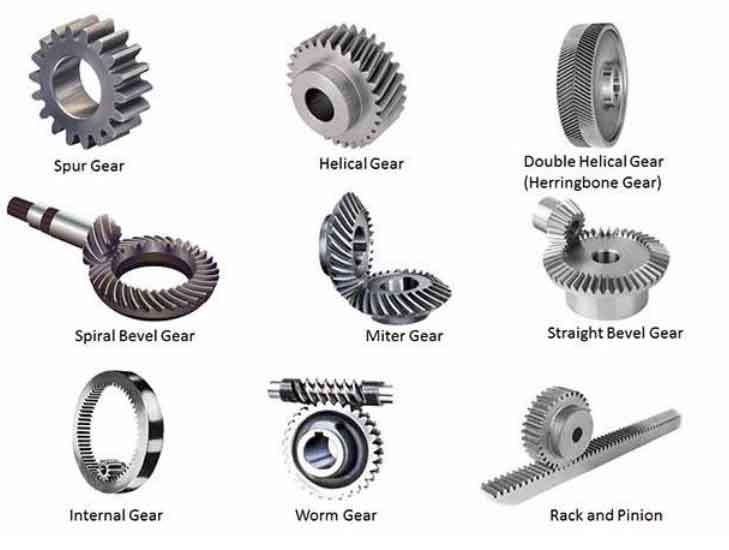Spur gears and rack and pinion systems are two different types of gear mechanisms used in mechanical systems. While both serve the purpose of transmitting power and motion, they have distinct designs, characteristics, and applications. Let’s compare spur gears and rack and pinion systems in terms of their design, motion, efficiency, torque transmission, backlash, and applications.

- Design:
- Spur Gears: Spur gears are cylindrical gears with straight teeth that extend radially from the gear’s center. They are typically used for transmitting power between parallel shafts.
- Rack and Pinion: A rack and pinion system consists of a linear gear called a rack and a circular gear called a pinion. The pinion, which is a small spur gear, meshes with the teeth of the rack, which is a straight, flat gear. Rack and pinion systems convert rotary motion into linear motion.
- Motion:
- Spur Gears: Spur gears provide rotational motion between parallel shafts. They can be used to transmit power and change speed ratios between the input and output shafts.
- Rack and Pinion: Rack and pinion systems convert rotary motion into linear motion or vice versa. The rotation of the pinion gear causes the rack to move in a straight line.
- Efficiency:
- Spur Gears: Spur gears are known for their high efficiency, typically ranging from 95% to 98%. The straight teeth of spur gears provide smooth and efficient power transmission.
- Rack and Pinion: Rack and pinion systems can achieve high efficiency, especially when properly lubricated and well-designed. However, efficiency can be affected by factors such as friction and misalignment.
- Torque Transmission:
- Spur Gears: Spur gears are suitable for transmitting high torque loads between parallel shafts. They can handle both parallel and axial loads effectively.
- Rack and Pinion: Rack and pinion systems can transmit torque efficiently, especially in applications where linear force or motion needs to be generated, such as steering systems in vehicles or linear actuators.
- Backlash:
- Spur Gears: Spur gears can have backlash, which is the slight clearance between the mating gear teeth. However, backlash can be minimized by proper gear design and manufacturing techniques.
- Rack and Pinion: Rack and pinion systems typically have less backlash compared to gear-based systems. The direct meshing of the teeth in a rack and pinion mechanism allows for minimal or no backlash, resulting in more precise and responsive motion.
- Applications:
- Spur Gears: Spur gears find wide application in various mechanical systems, including automotive transmissions, machinery, conveyor systems, and many other power transmission applications where high efficiency and precise speed ratios are required.
- Rack and Pinion: Rack and pinion systems are commonly used in applications where linear motion or force is needed, such as steering systems in automobiles, CNC machines, robotics, and lifting mechanisms.
Spur gears are ideal for transmitting power between parallel shafts, while rack and pinion systems are used to convert rotational motion into linear motion. Spur gears excel in efficient power transmission and are versatile in various applications. Rack and pinion systems, on the other hand, are well-suited for applications requiring linear motion or force generation. The choice between spur gears and rack and pinion systems depends on the specific requirements of the application, including the desired type of motion, torque transmission, efficiency, and precision.
